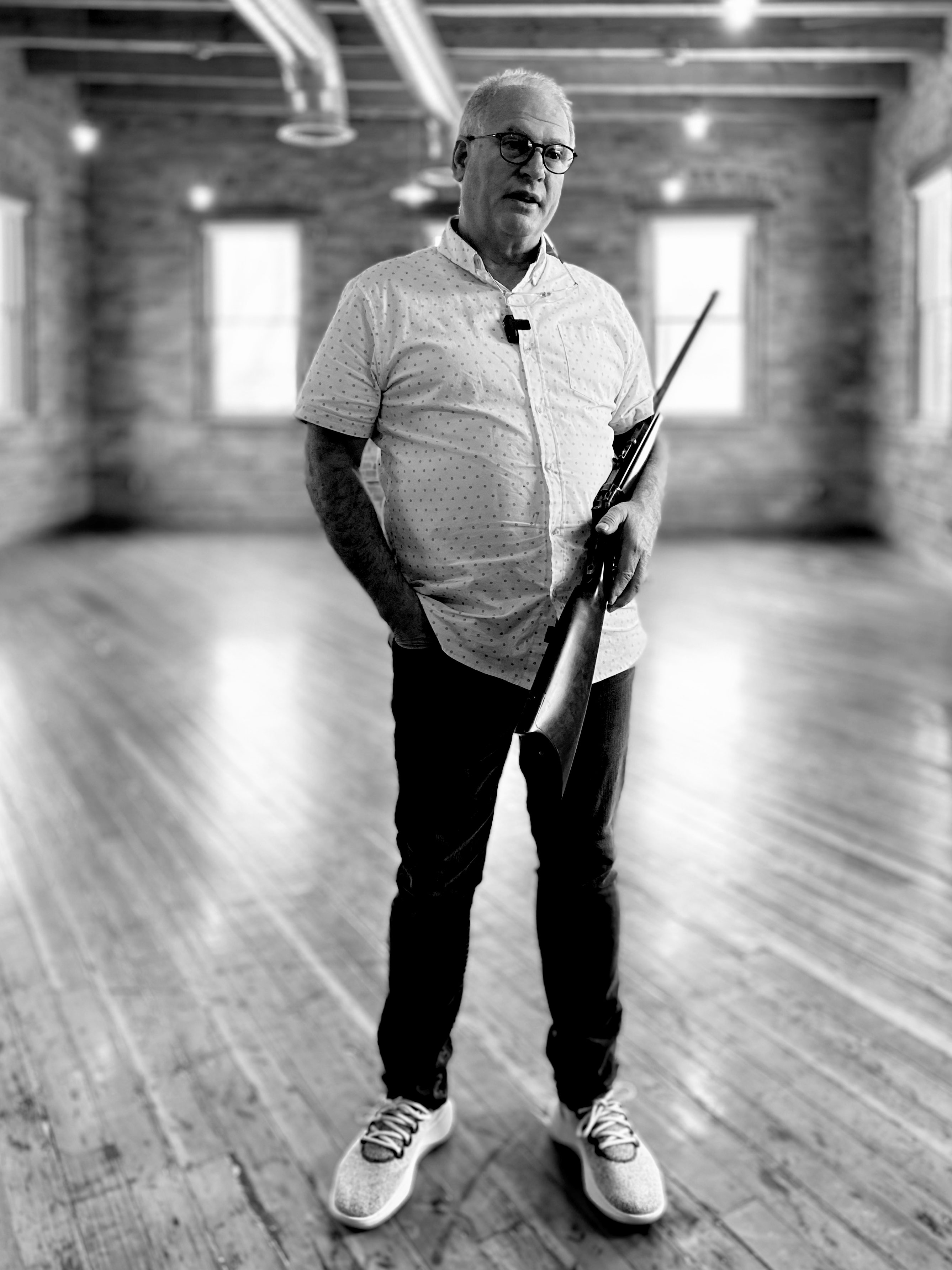
“You cannot build history,” Jim Alvey says as he describes restoring the old Browning building as one of the most satisfying experiences of his life. There are traces of history in every building, but the Browning building is exceptional. Its bricks tell the story of two brothers, in a relatively small town, that revolutionized an industry and helped win WWII—and whose inventions are still used nearly a century after their death.

FIREARMS HISTORY
It is difficult to overstate the impact John M. Browning and Matthew S. Browning had on the gun industry. John M. Browning was one of the world’s most important and prolific firearms inventors in history and is known as the founder of modern firearms. He designed guns for his own Company, Winchester, Colt, Remington, Savage, Stevens, and Fabrique Nationale. He made his first gun at the age of thirteen and continued until, literally, his very last day. (He died of heart failure in his son’s design shop while working on a self-loading pistol.)

WORLD HISTORY
Browning designs were used in the Spanish–American War, World War I, World War II, and the Korean War. A variant of their design is still used by special ops units of the United States Marine Corps and some police departments. The Browning Hi-Power remains the standard sidearm of the Australian and Canadian armed forces, and the .50 caliber M2 Browning machine gun (“ma deuce”) has remained in active service for over a century with militaries across the world in a variety of roles.
Though [John Browning] died in 1926, he provided his nation with nearly all its World War II machine guns, its automatic rifle and its foremost sidearm. Browning’s magnificent M2 machine gun…gave America and her allies the priceless gift of global air superiority. Nothing else came close.
In 1940, Adolf Hitler was trying to compel Great Britain to negotiate a peace settlement or surrender. Germany’s failure to do so in the Battle of Britain was the first major German defeat in WWII and is thought to be a crucial turning point in the war. Hermann Göring, head of the Luftwaffe, reportedly once wrote, “If the German Air Force had the Browning .50 caliber, the Battle of Britain would have turned out differently.”

OGDEN HISTORY
The Browning family, in part from their inventions, and in part from their investment in Utah Construction Company—which later merged with GE, the largest corporate merger in history at the time—was one of the prominent wealthy families in Ogden. In its heyday, Ogden, Utah had more millionaires per capita than any other city in the country. As a result, Ogden is a treasure trove of great historic buildings.

BROWNING BUILDING HISTORY
Winchester saw the Browning Model 1878 Single Shot Rifle and approached the Browning brothers to purchase the design. The Brownings reportedly asked for $10,000 because it was the highest number they could think of. They agreed on $8,000, and since that time, the Browning brothers focused on designing and patenting firearms rather than on manufacturing them. This is the last building standing where the Browning brothers designed and prototyped firearms.
Jim Alvey bought the building in 2000 and spent the next twenty years restoring the building, piece by piece, while also using it to house his company, Alvey Media. The original elevator still operates. A window was filled in with brick when they installed the elevator, and Jim opened it again so you can watch the elevator through the opening (now covered in glass). One of the most prominent (and expensive) parts of the restoration was the large glass storefront. Several companies now rent office space in the building, and the original brick walls are prominent throughout. The Browning building perfectly marries history with modern use.




We started Plot, in part, to encourage people to be more thoughtful about the built environment. The story of Jim Alvey and the Browning building is the first in a series of “Field Trips” where we feature buildings with a story to tell—and the people who were thoughtful about what to do with them. Huge thanks to Jim for the tour.